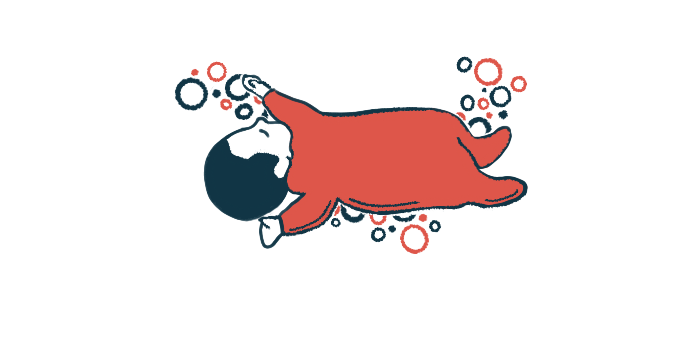Case study supports efficacy of biliary diversion surgery for PFIC4
Surgery reduced markers of liver damage, eased itching in 6-month-old boy

Biliary diversion surgery — which can be used in patients with bile duct problems — successfully reduced markers of liver damage, lessened itching, and improved growth in a 6-month-old boy with progressive familial intrahepatic cholestasis type 4 (PFIC4), a case study showed. The infant had been unresponsive to standard treatment.
The surgical procedure, in which a new channel is created to allow the digestive fluid bile to exit the liver when issues occur with the ducts that transport bile, has already been reported to ease itchy skin, or pruritus, in more common types of PFIC.
This case report supports the effectiveness of biliary diversion surgery also in rarer types such as PFIC4. Further, the researchers noted that it could potentially prevent some patients from needing transplant surgery.
“Surgical management using biliary diversion could be beneficial and could delay or even obviate the need for liver transplantation,” the researchers wrote.
The case study, “Progressive familial intrahepatic cholestasis type 4: a case report,” was published in the Journal of Medical Case Reports.
Biliary diversion surgery has shown benefits for other PFIC types
Progressive familial intrahepatic cholestasis is an umbrella term for rare genetic liver diseases characterized by problems producing and/or secreting bile by liver cells. Bile typically flows out to the intestines through a series of bile ducts.
In individuals with PFIC, bile flow is slowed or stalled inside the liver, a condition known as intrahepatic cholestasis, which leads to the toxic accumulation of bile in the liver.
Common symptoms include dark urine, pruritus, and jaundice, or yellowing of the skin and the white parts of the eyes. Left unmanaged, PFIC is associated with a high risk of liver failure and a need for a liver transplant.
The disease is classified into specific types based on the gene that is mutated. The most common types are PFIC1, PFIC2, and PFIC3. However, with the advancement of genetic profiling, rarer subtypes have been identified.
This includes PFIC4, which is caused by a mutation in the TJP2 gene. That gene contains the instructions for a protein important in maintaining cell-to-cell connections, such as those between cells forming bile canaliculi, the thin tubes that collect bile from liver cells.
PFIC4 patients can show symptoms of mil pruritus without jaundice and severe progressive liver disease that is typically marked by elevated blood levels of bile acids and bilirubin — both markers of liver damage — but normal levels of a liver enzyme called gamma-glutamyl transferase, or GGT.
Biliary diversion surgery, which diverts bile flow and reduces bile accumulation, has been successfully reported to ease pruritus in PFIC1 and PFIC2 patients. However, its effects on other, rarer PFIC types remain unknown.
Case supports surgery for patients with treatment-resistant PFIC4
Now, researchers at Alexandria University’s Faculty of Medicine in Egypt described the case of an infant with PFIC4 whose signs and symptoms of the disease were successfully managed with biliary diversion surgery.
The boy had been experiencing progressive jaundice and persistent pruritus since he was 3 months old. A physical examination revealed he had a markedly yellow tone and several scratch marks on his body, and that his growth was impaired. His liver was enlarged and his urine was dark.
Blood tests showed elevated levels of several liver damage markers, including bile acids and bilirubin, but normal GGT levels. At this stage, PFIC and other liver disorders were considered.
A liver biopsy demonstrated the presence of several abnormalities, including cholestasis in bile canaliculi and mildly fewer bile ducts, supporting a PFIC diagnosis. Genetic testing revealed a disease-causing mutation in both copies of the TJP2 gene, confirming a PFIC4 diagnosis.
The baby was kept on a tailored diet, with vitamin supplements and standard medications, including ursodeoxycholic acid and cholestyramine, until he was 1 year old. But he still showed impaired growth and pruritus worsening, leading to scars and reduced life quality.
Postoperatively, the patient was doing well after 18 months of follow-up with [a] marked drop in the level of … bilirubin, improvement in the growth pattern … and relief of pruritus.
He then underwent surgical biliary diversion, which led to marked improvements.
“Postoperatively, the patient was doing well after 18 months of follow-up with [a] marked drop in the level of … bilirubin, improvement in the growth pattern … and relief of pruritus,” the team wrote.
Overall, according to the researchers, this case report supports the benefits of biliary diversion surgery for patients with treatment-resistant PFIC4. The team noted that such surgery could potentially delay or eliminate the need for a future liver transplant.








